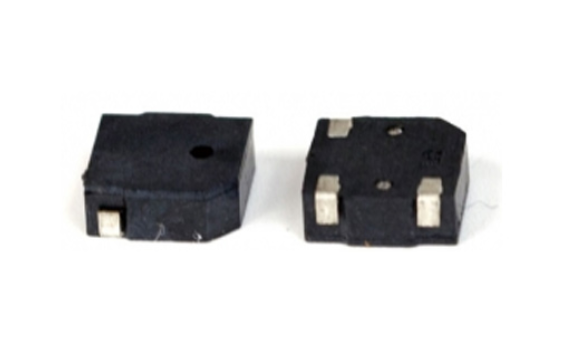What Makes SMD Buzzers Integral Components in Modern Electronics
 Aug 26, 2023|
Aug 26, 2023| View:1061
View:1061In the intricate world of electronics, every component plays a vital role in creating functional and interactive devices. Among these components, the Surface Mount Device (SMD) buzzer has emerged as an essential element in various applications. This article explores the functionality, benefits, and diverse applications of SMD buzzers, revealing how they have become indispensable in modern electronic design.

Understanding SMD Buzzers
An SMD buzzer is a compact electronic component designed to produce audible alerts or notifications. As part of the Surface Mount Technology (SMT) family, these buzzers are designed for direct placement on the surface of printed circuit boards (PCBs), eliminating the need for through-hole mounting.
How SMD Buzzers Work
Piezoelectric Transduction: Most SMD buzzers utilize piezoelectric transduction to generate sound. When an electrical signal is applied, the piezoelectric material within the buzzer rapidly expands and contracts, creating mechanical vibrations that produce audible sound waves.
Frequency and Tone: The frequency and tone of the sound produced depend on the design of the buzzer and the electrical signal applied. Different applications require different frequencies to convey specific alerts.
Benefits of SMD Buzzers
Compact Design: SMD buzzers are significantly smaller and more lightweight compared to traditional through-hole buzzers, making them ideal for devices with limited space.
Efficient Assembly: The surface mount design of these buzzers simplifies the assembly process, reducing manufacturing time and costs.
Enhanced Reliability: SMD technology ensures a strong solder connection, reducing the risk of mechanical failure and increasing the component's overall reliability.
Diverse Sound Options: SMD buzzers are available in various sound options, including continuous, pulsating, and multi-tone sounds, allowing customization for different applications.
Applications of SMD Buzzers
Consumer Electronics: SMD buzzers are commonly found in consumer electronics like smartphones, tablets, and wearables, providing audible notifications for incoming calls, messages, and alerts.
Home Appliances: They play a role in household appliances such as washing machines, microwave ovens, and alarms, signaling the end of a cycle or alerting users to specific events.
Automotive Sector: SMD buzzers are used in vehicles for seatbelt reminders, door ajar alerts, and low fuel notifications, enhancing driver safety and convenience.
Industrial Equipment: In industrial settings, these buzzers are integrated into machinery and equipment to indicate operational status or signal potential issues.
Integration and Considerations
PCB Design: Integrating SMD buzzers requires careful consideration of the PCB layout to ensure optimal sound propagation and minimize interference.
Voltage and Current: Proper voltage and current considerations are vital to ensure the buzzer operates within its specified parameters and produces consistent sound quality.
Sound Characteristics: Choosing the appropriate buzzer with the right sound characteristics ensures that the intended alerts are effectively communicated.
SMD buzzers exemplify how small components can have a significant impact on the functionality and user experience of electronic devices. Their compact design, efficient assembly, and diverse sound options have made them indispensable across various industries. From consumer electronics to industrial applications, SMD buzzers contribute to safer, more interactive, and more convenient devices, underscoring their crucial role in modern electronic design and manufacturing.





